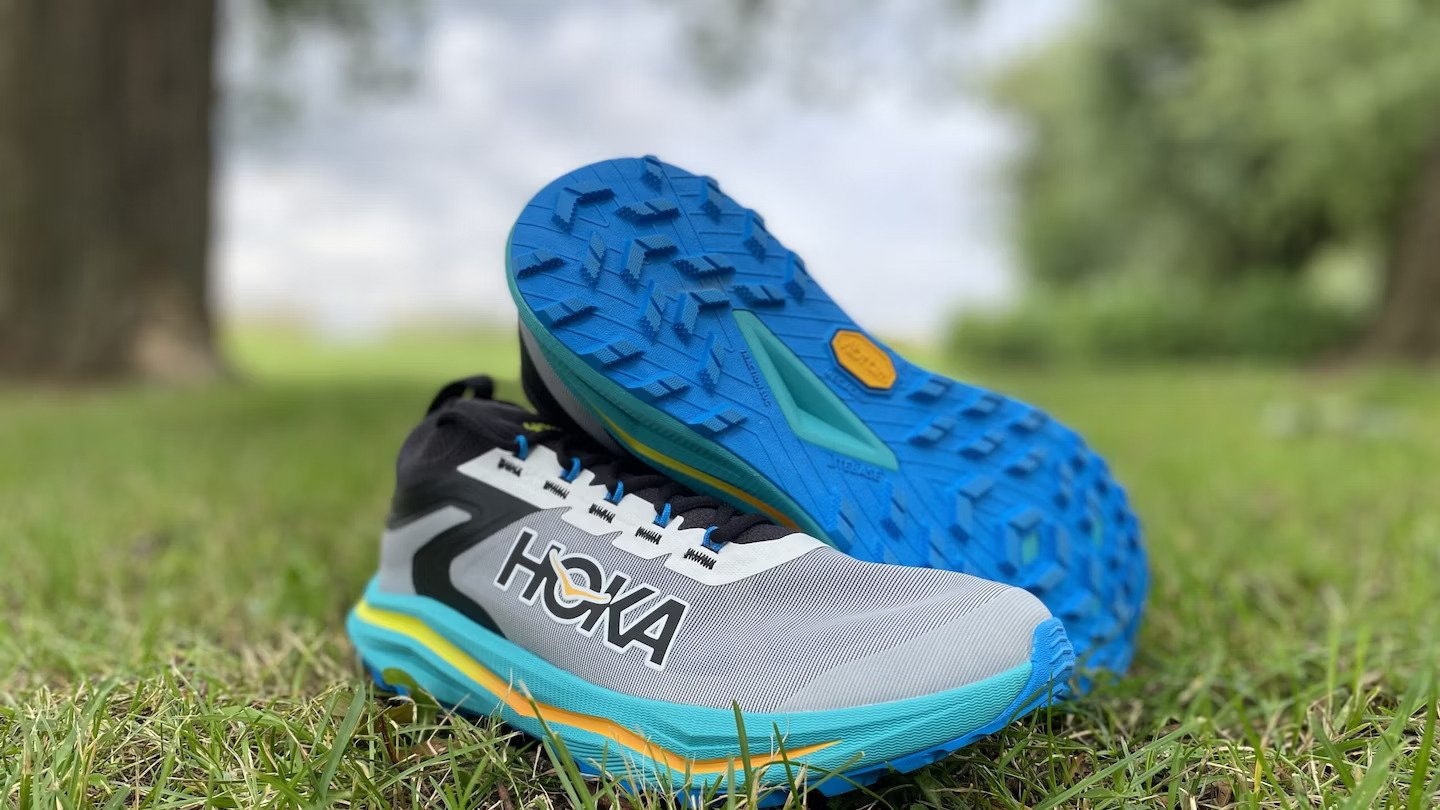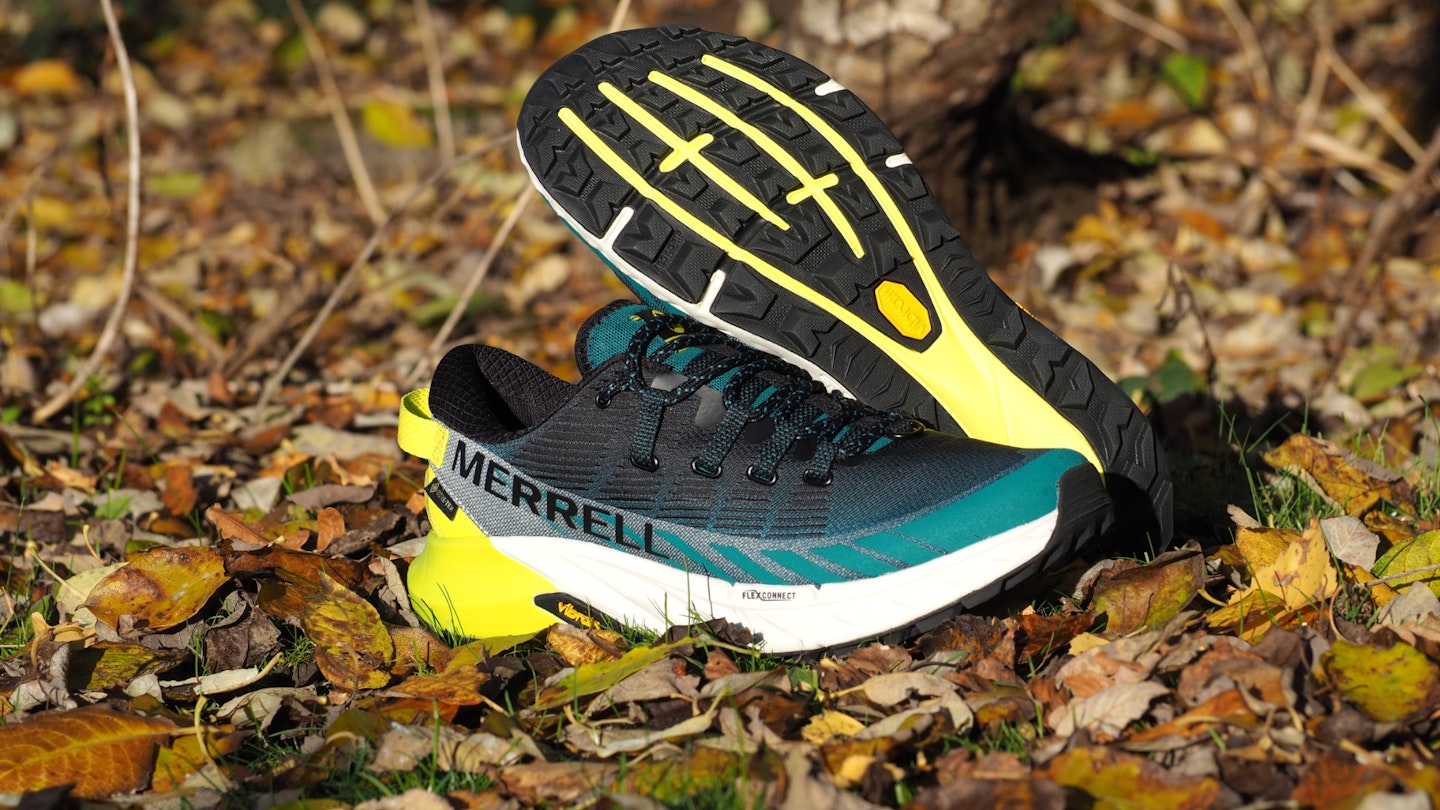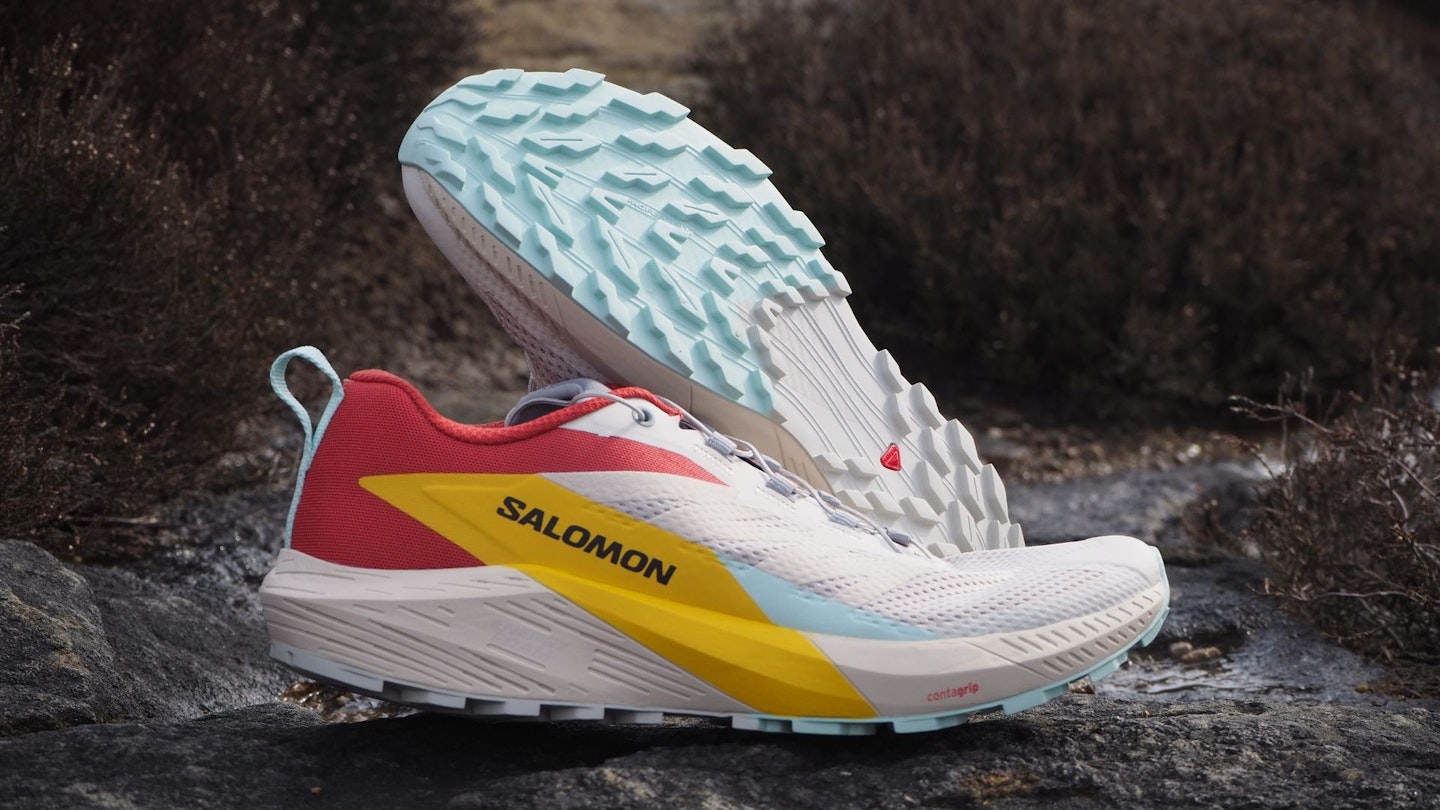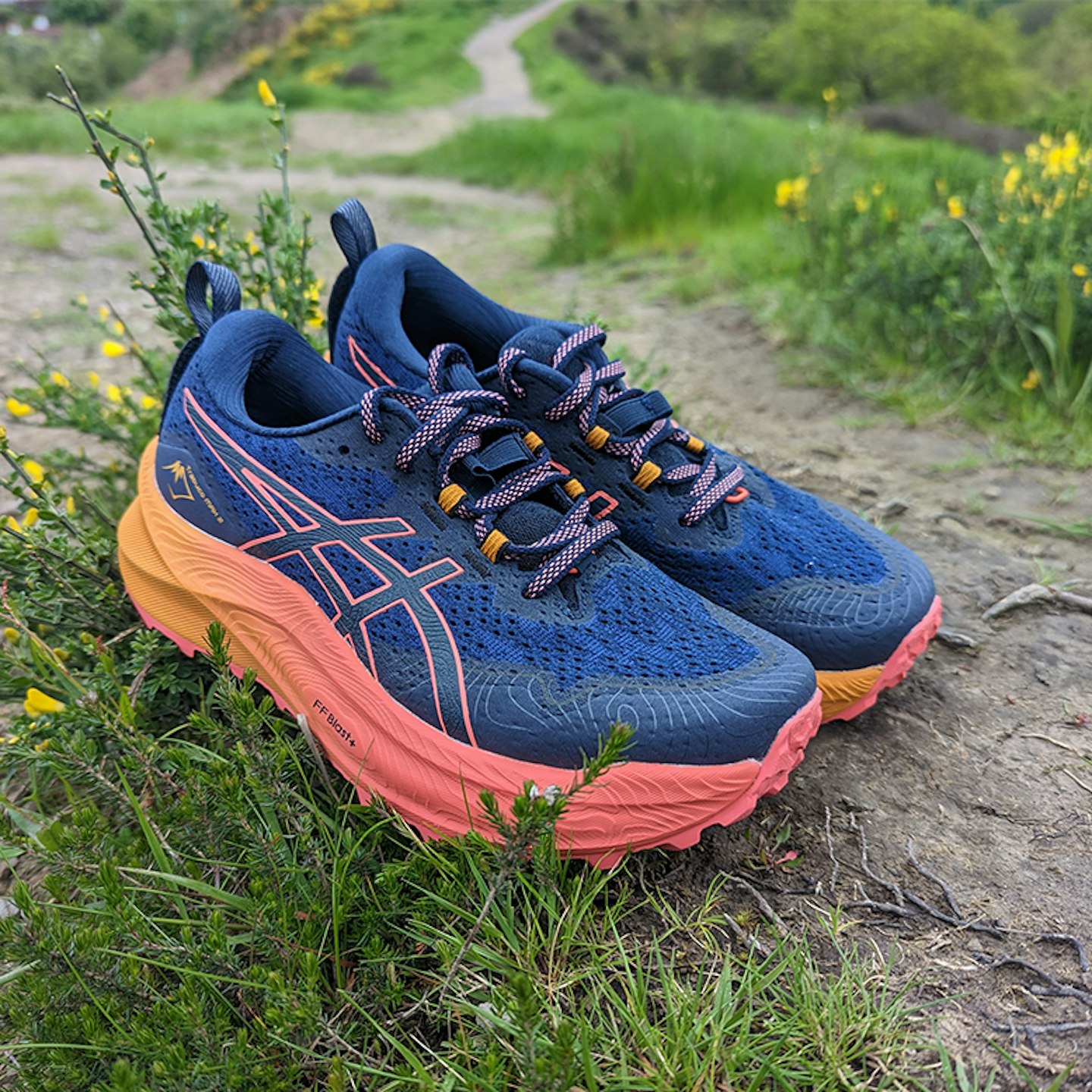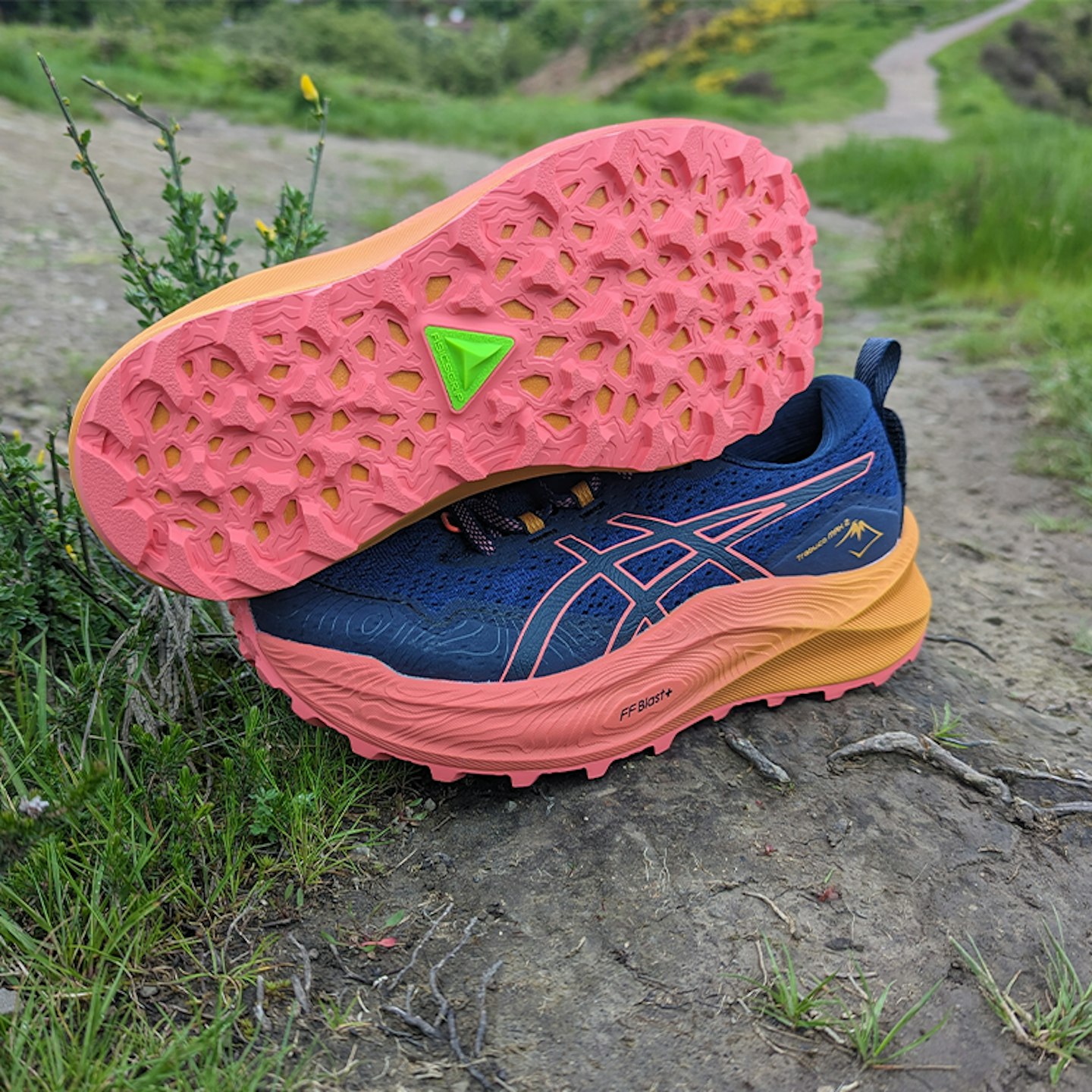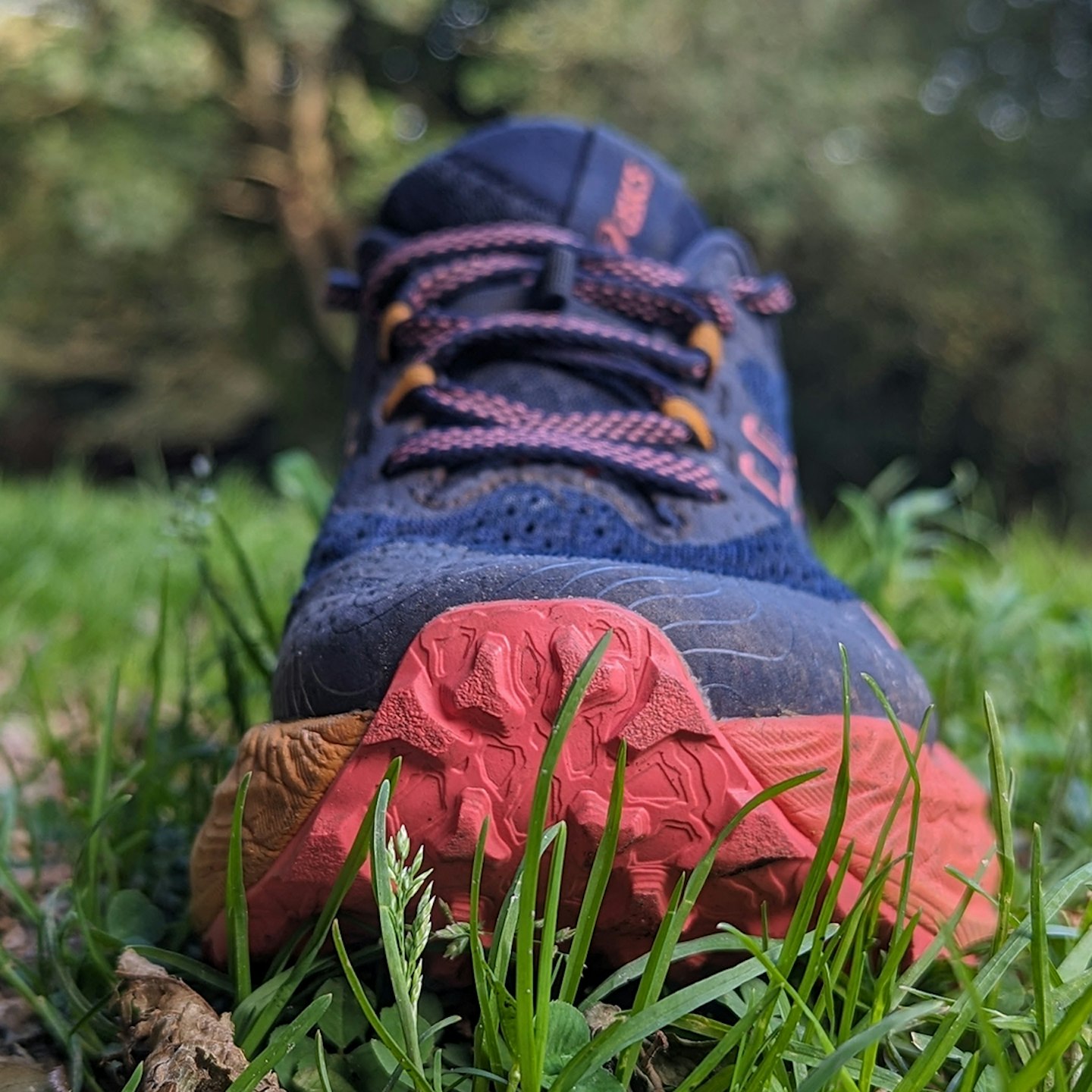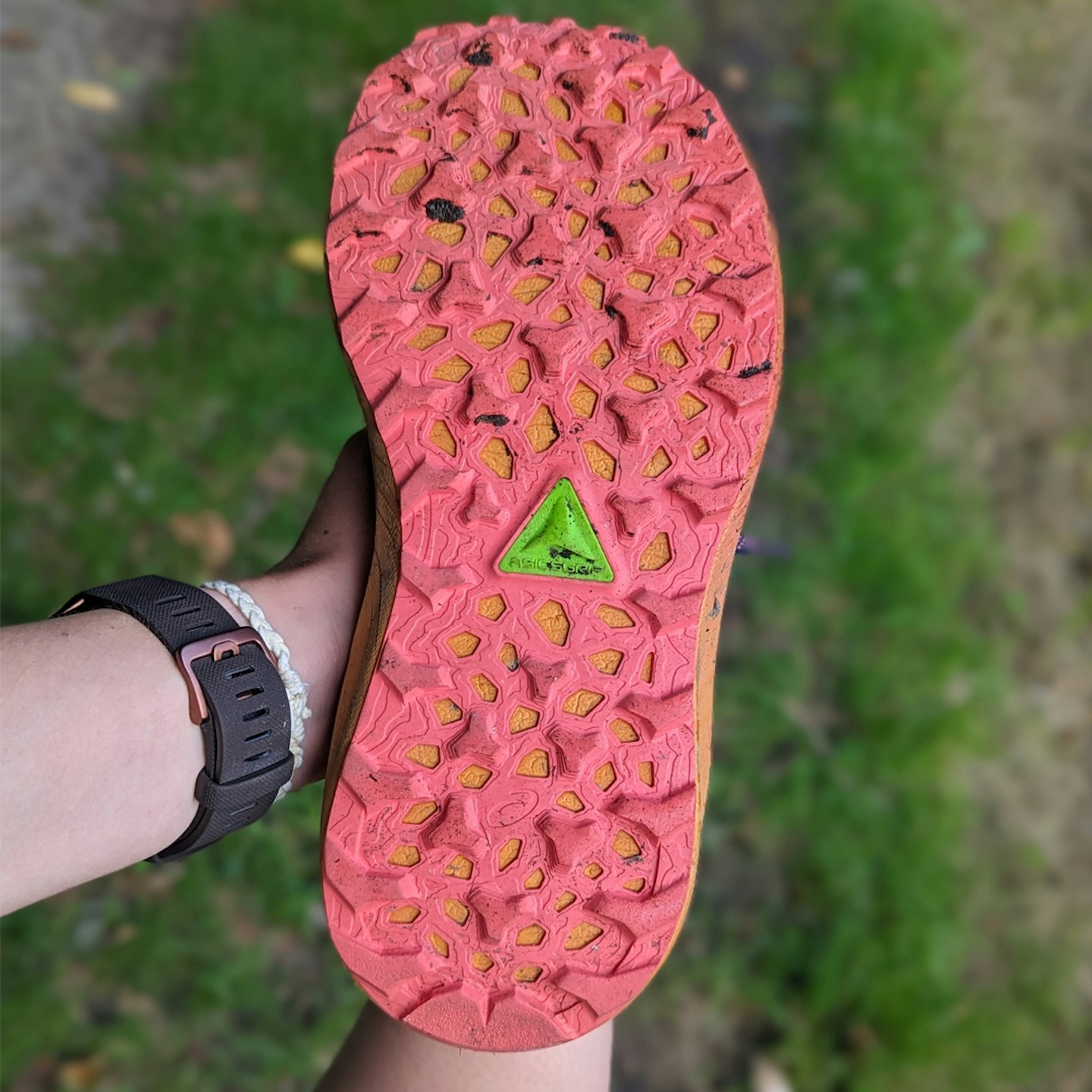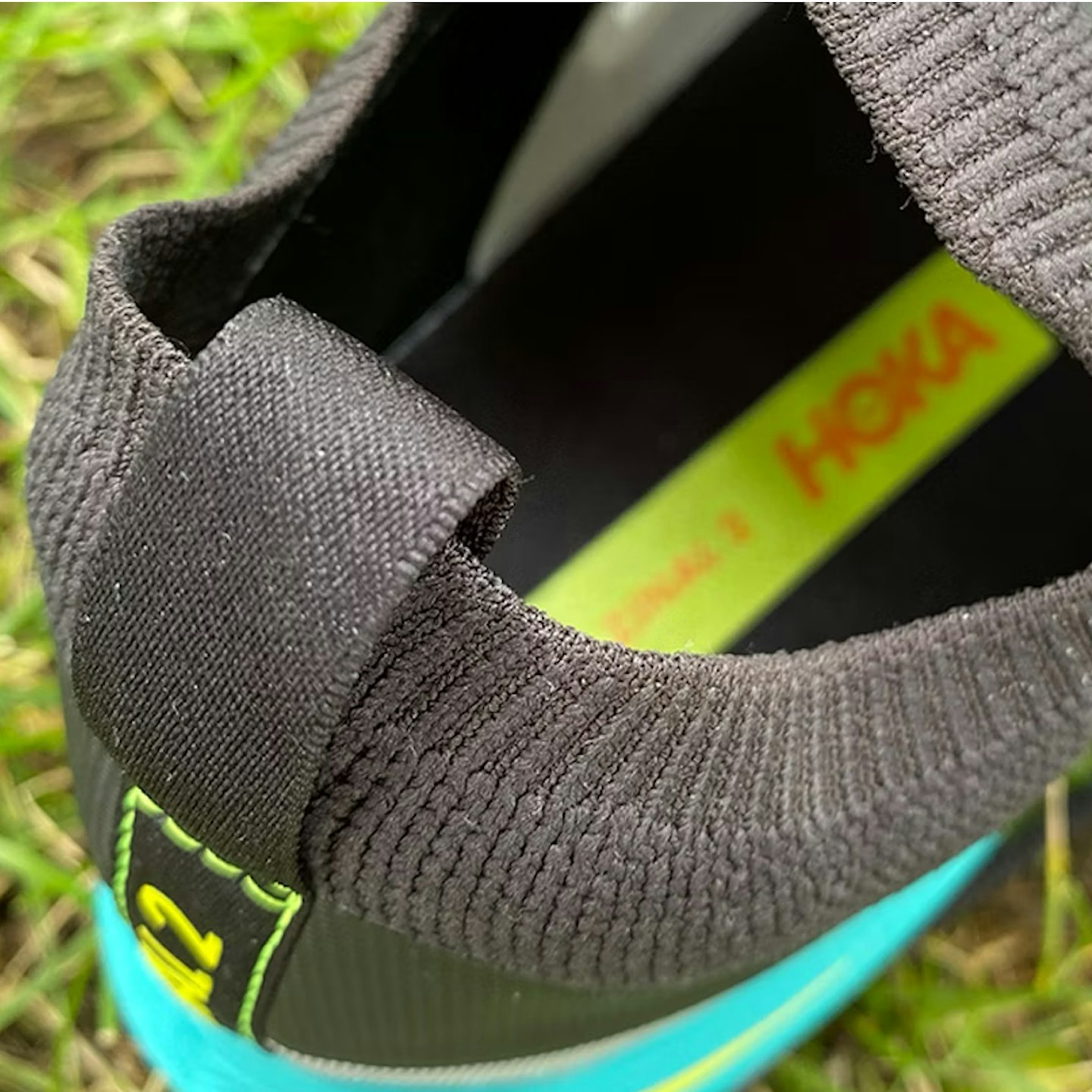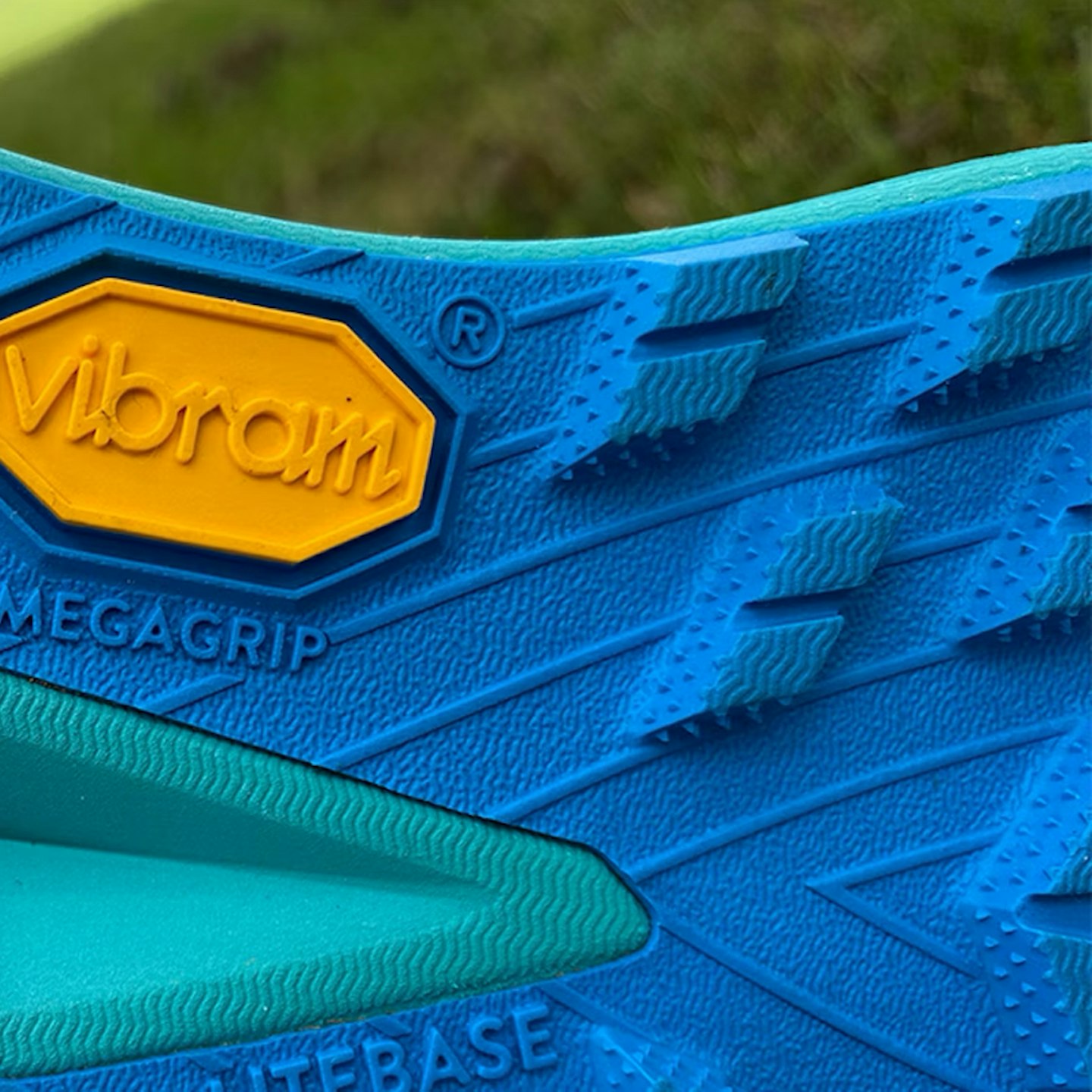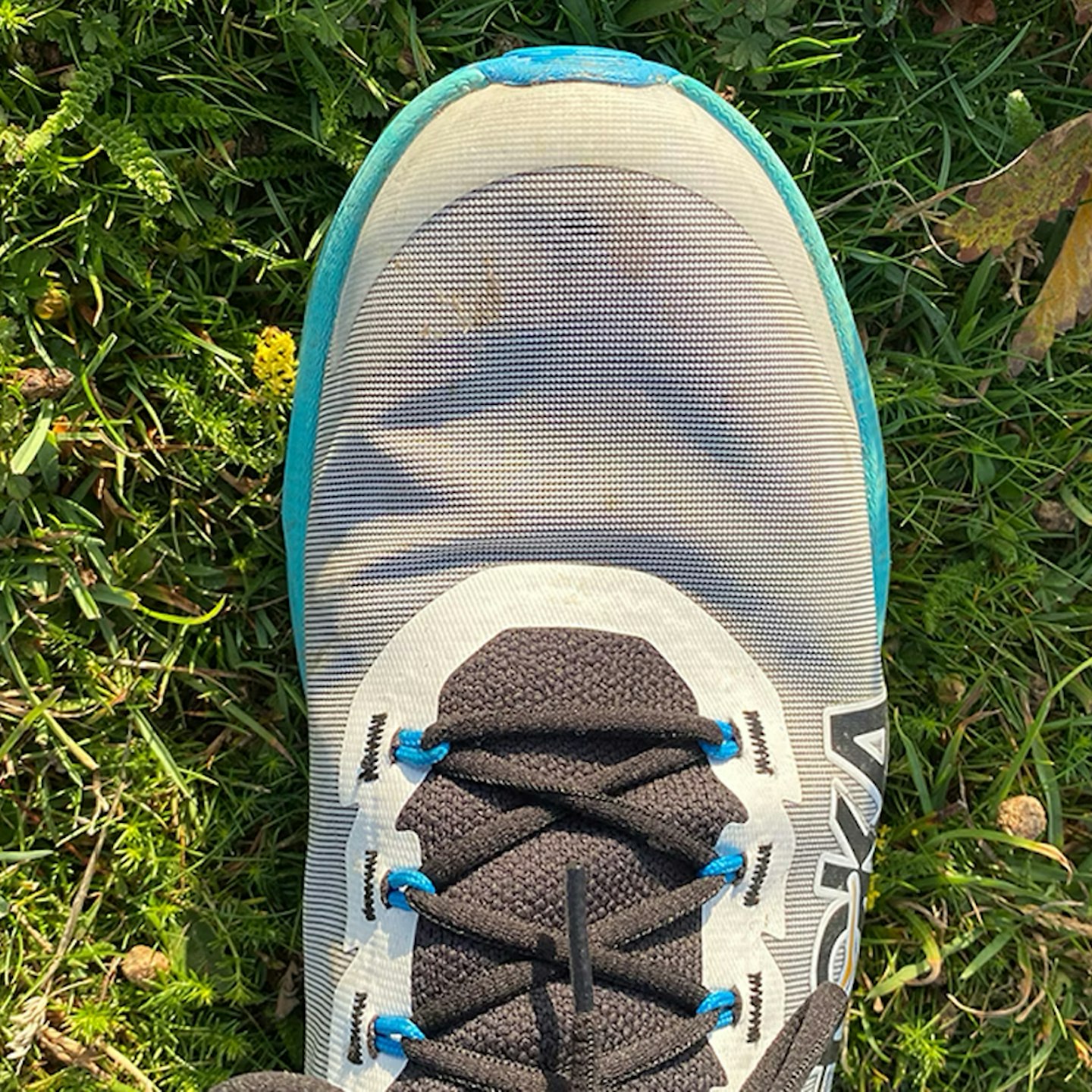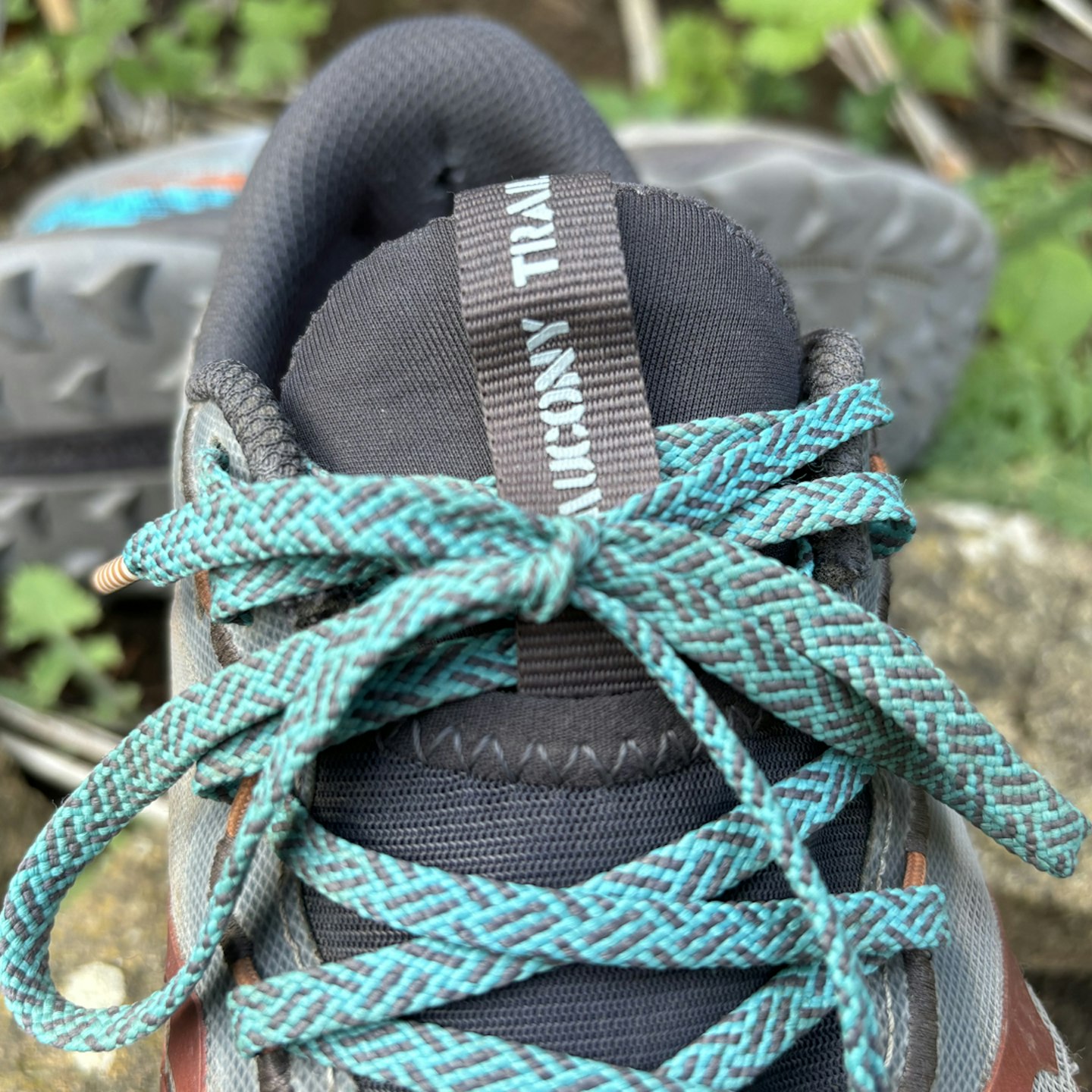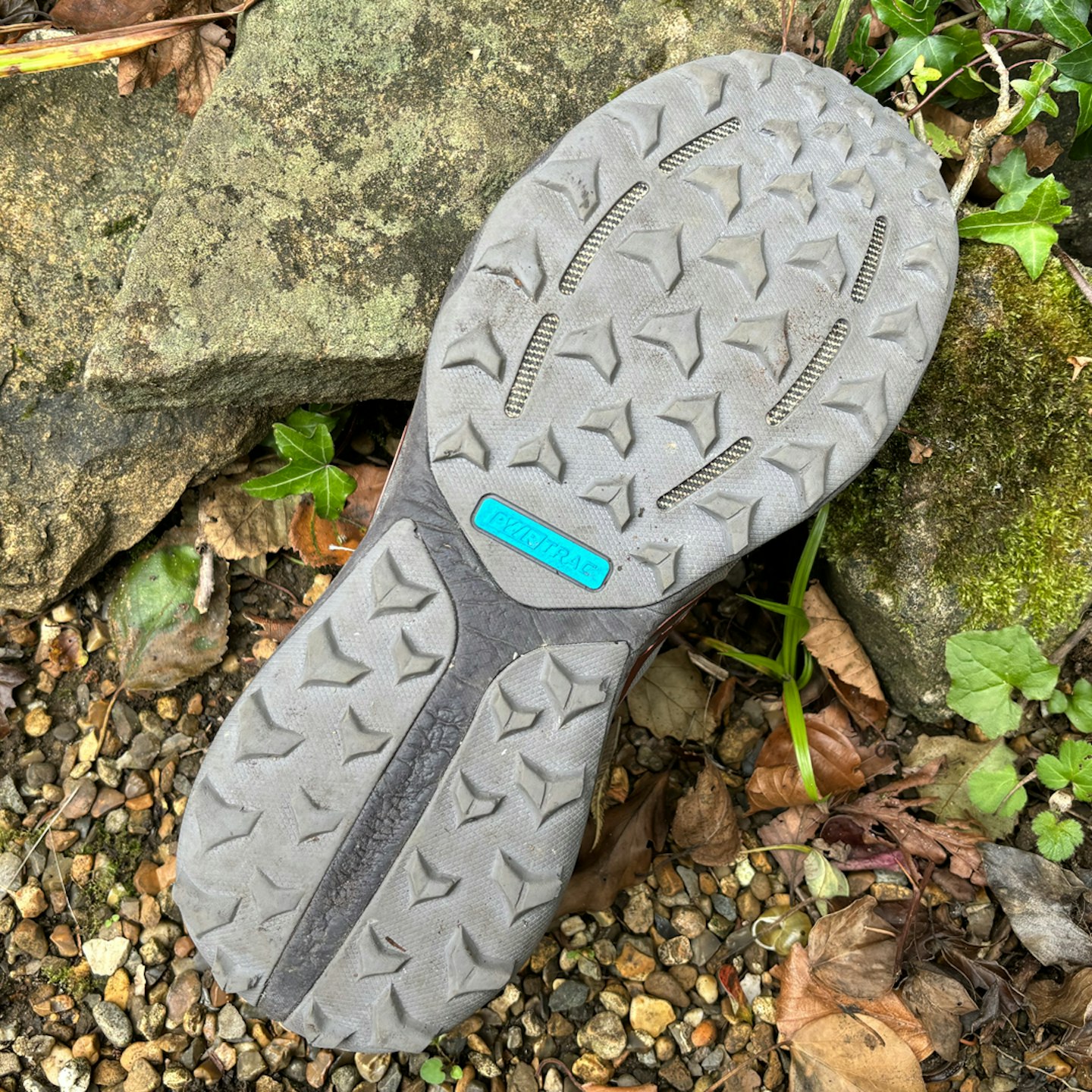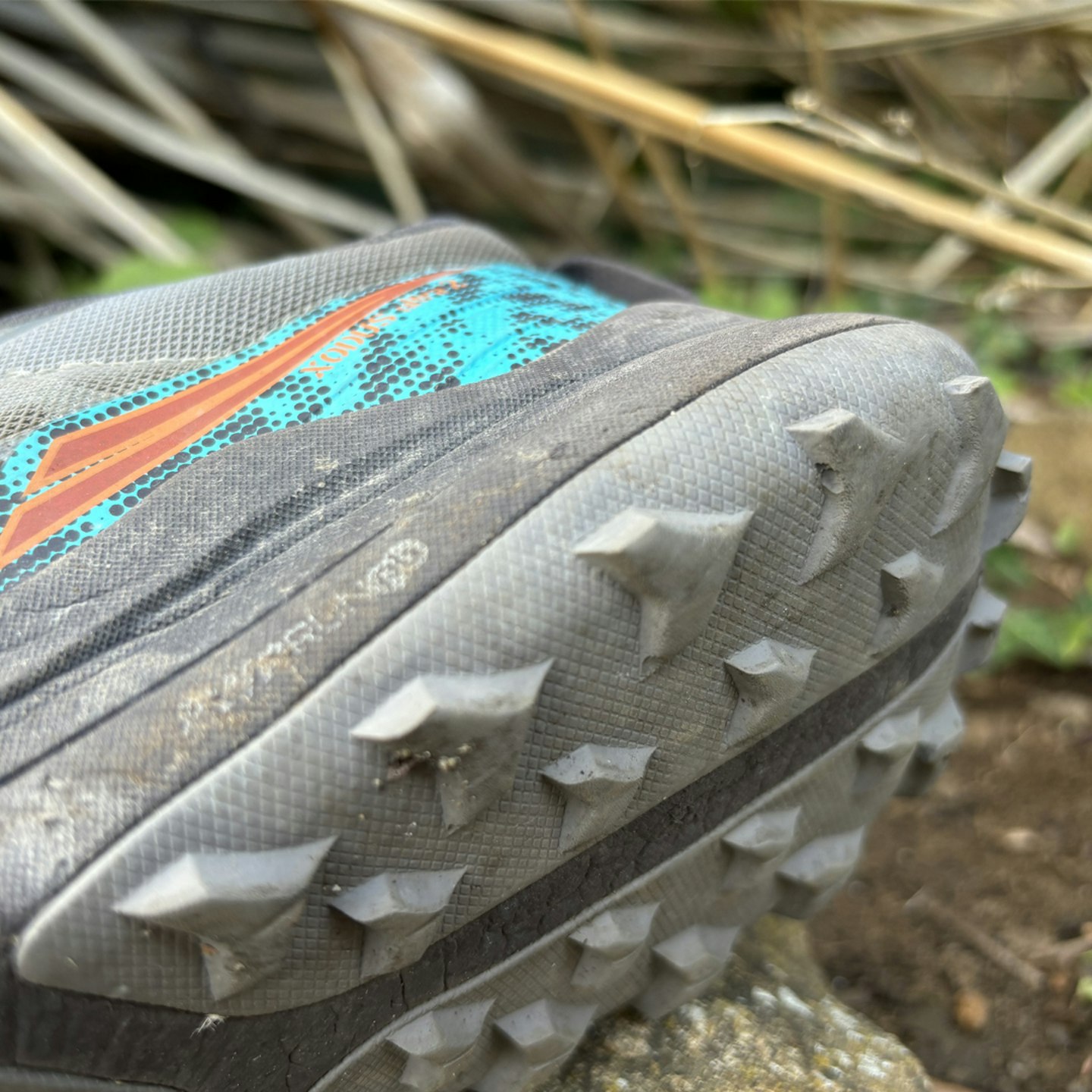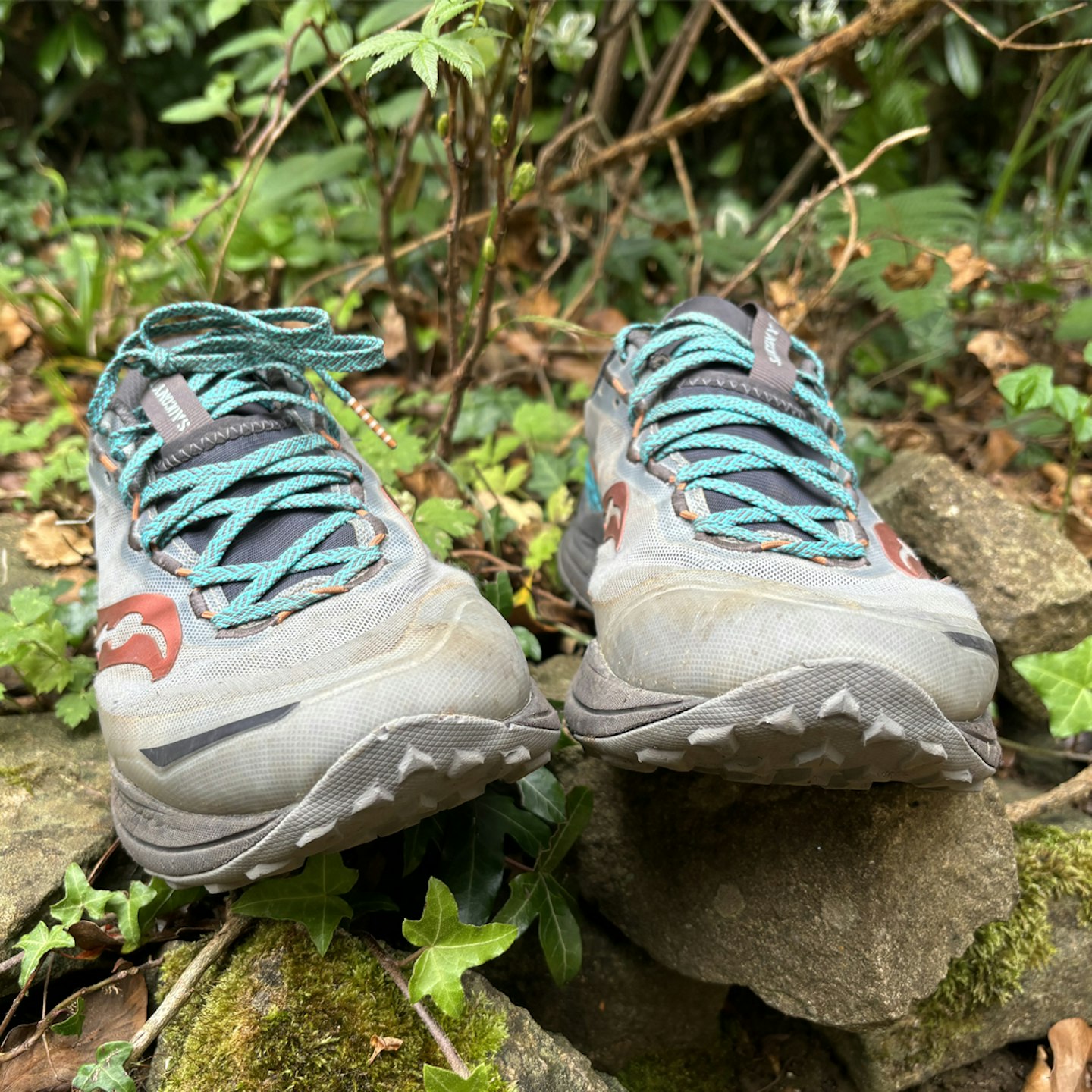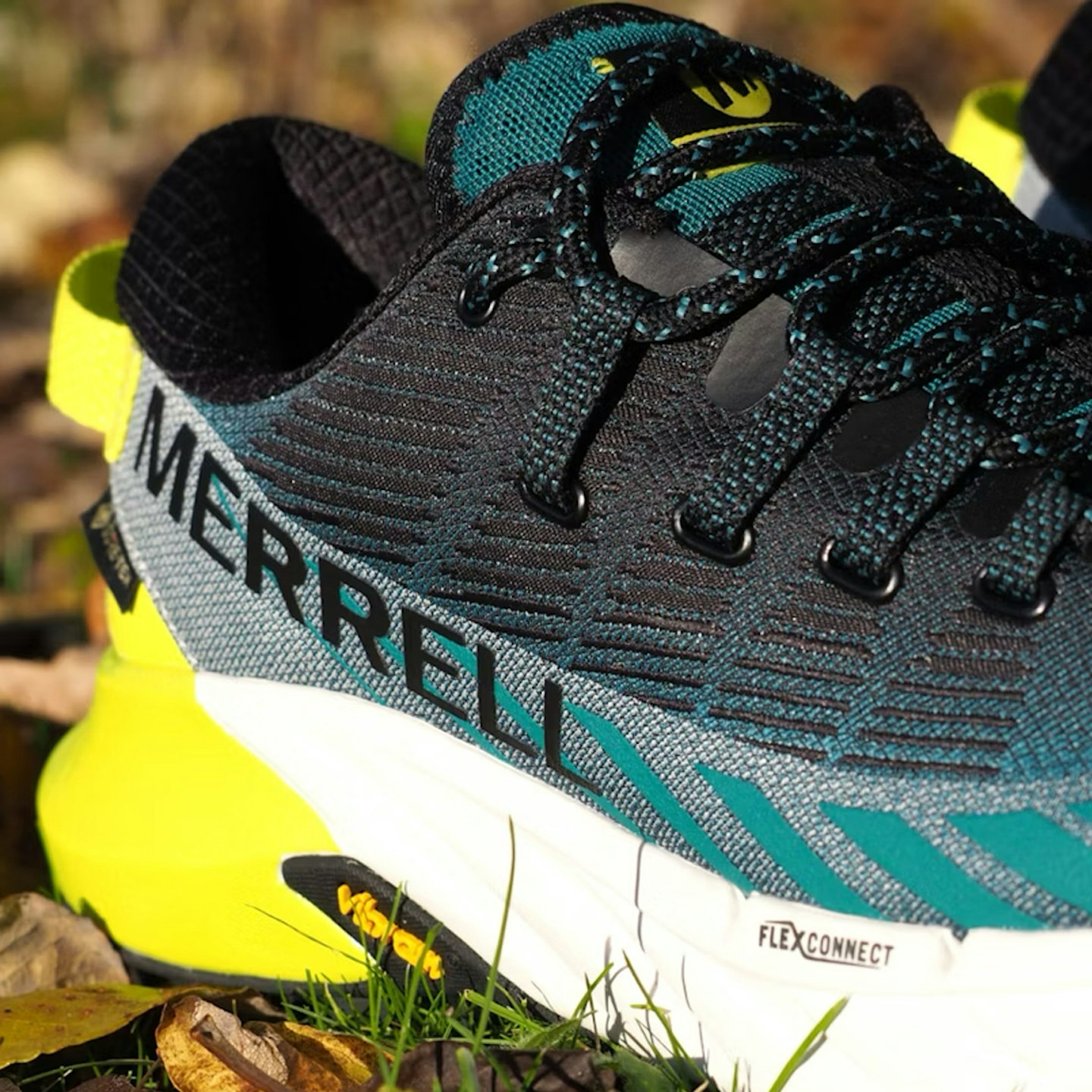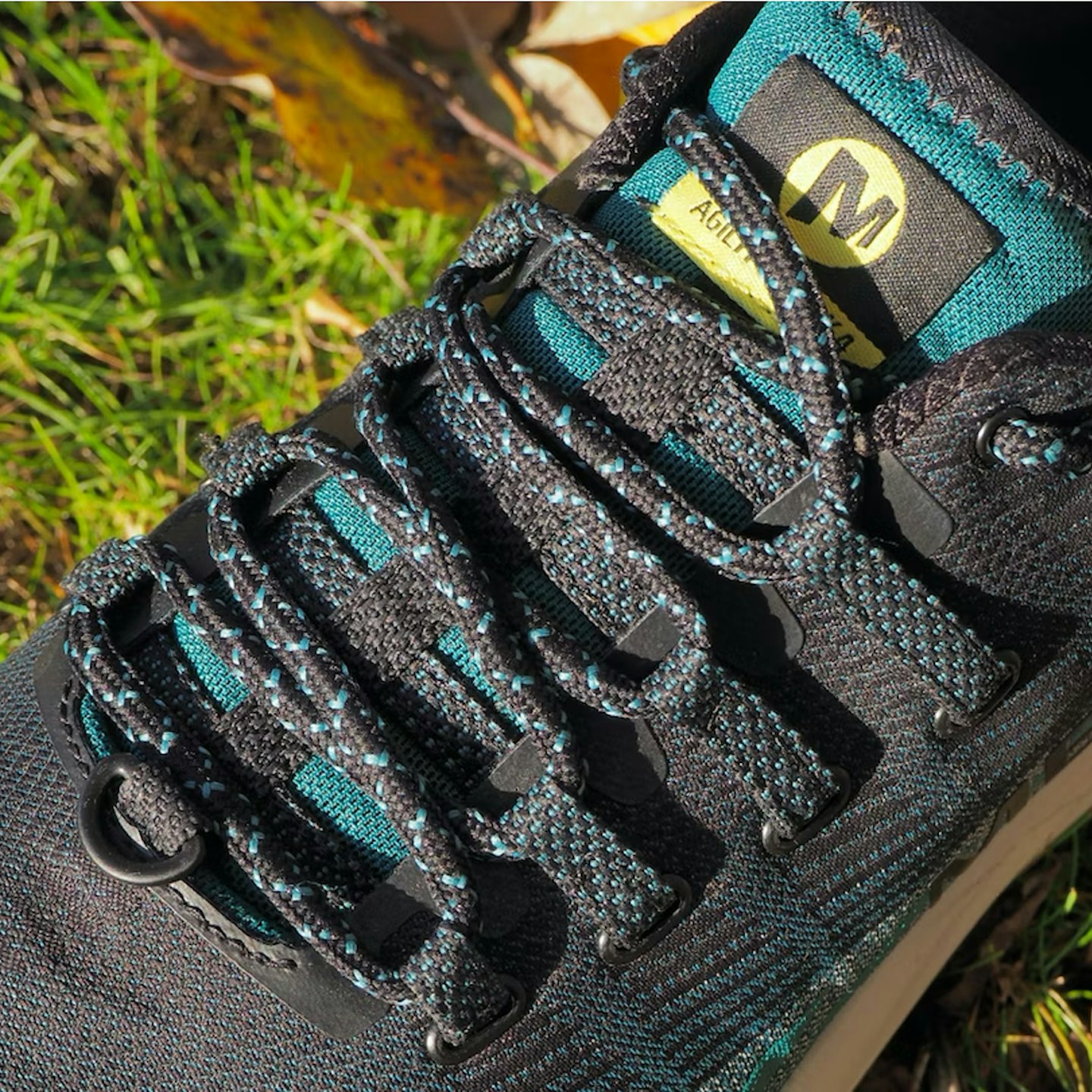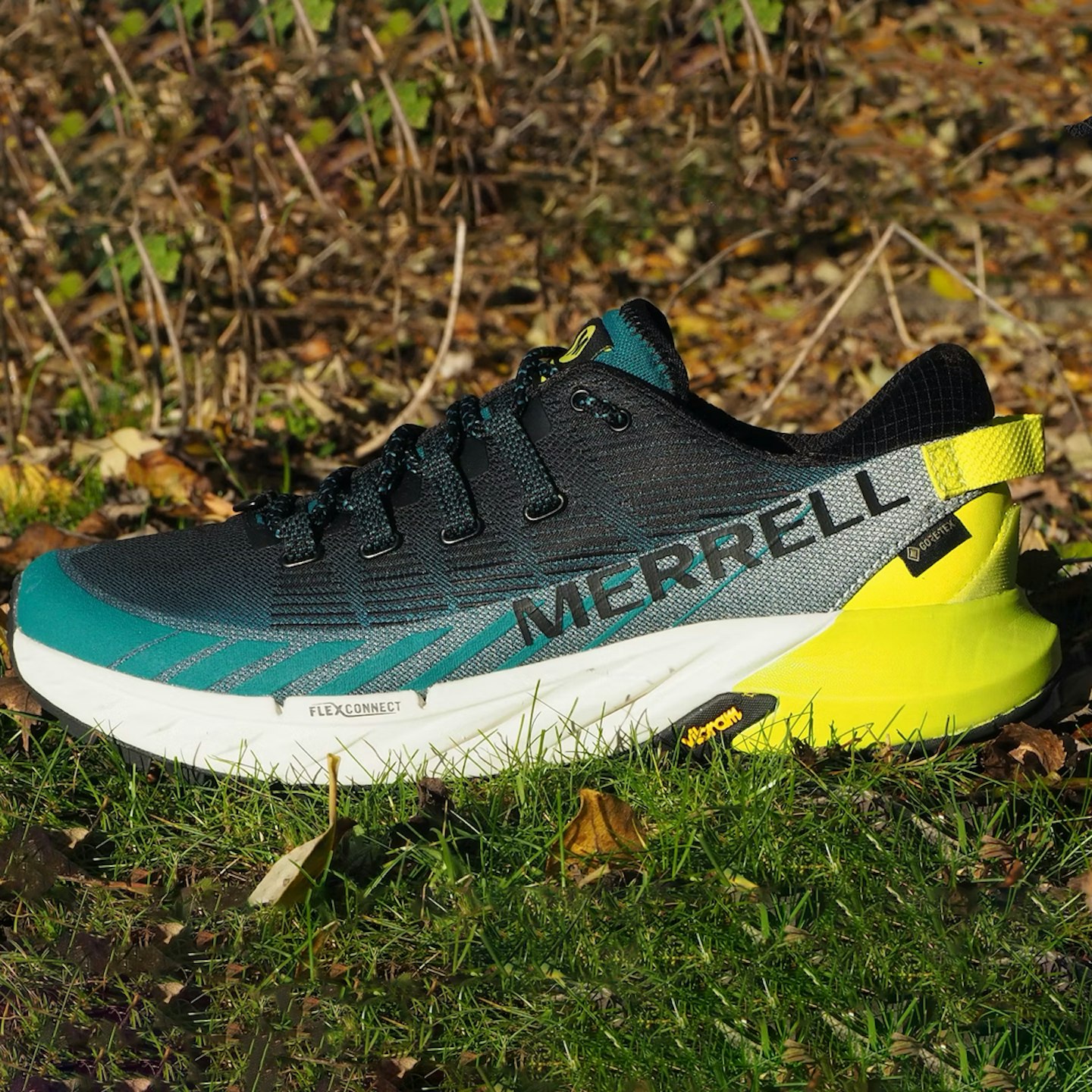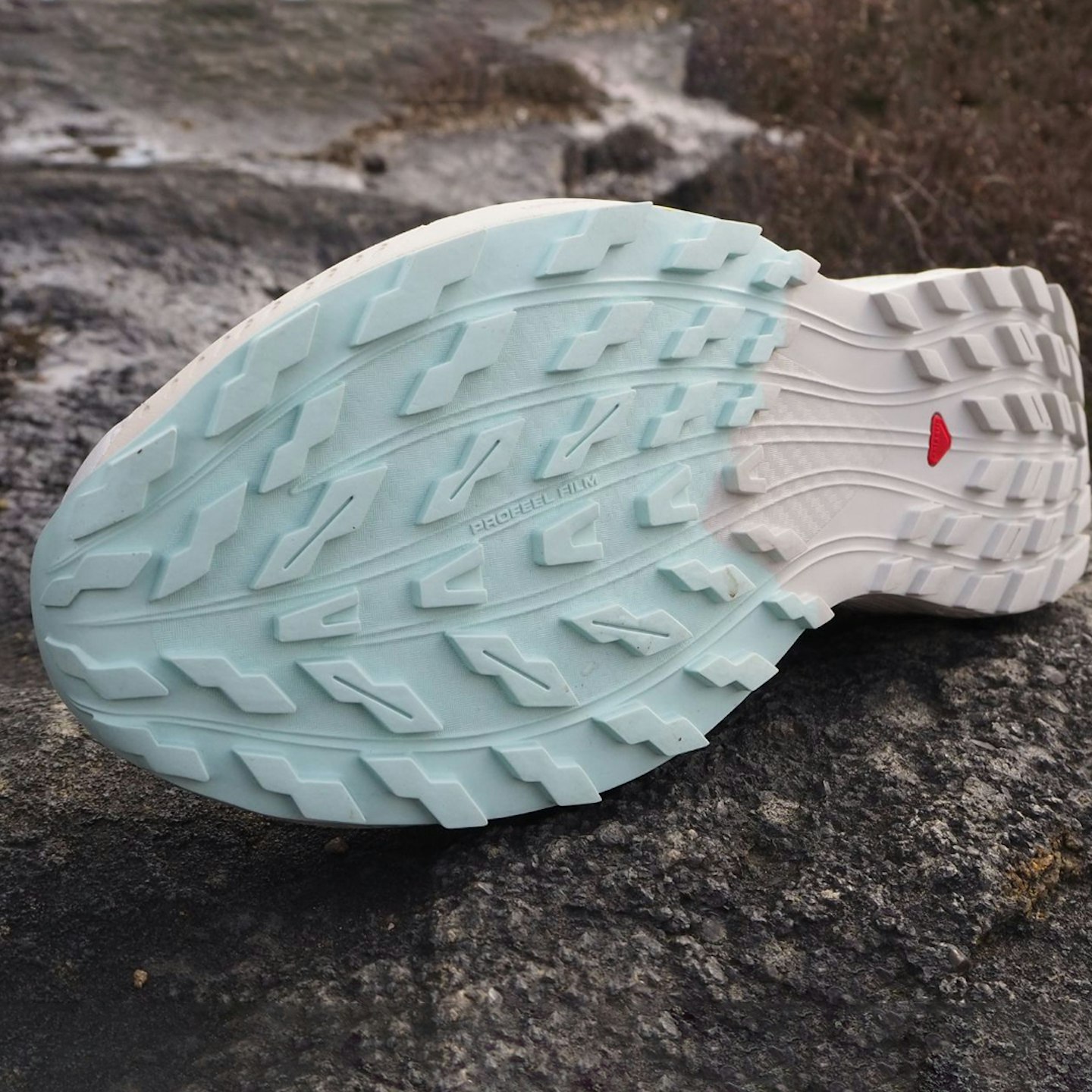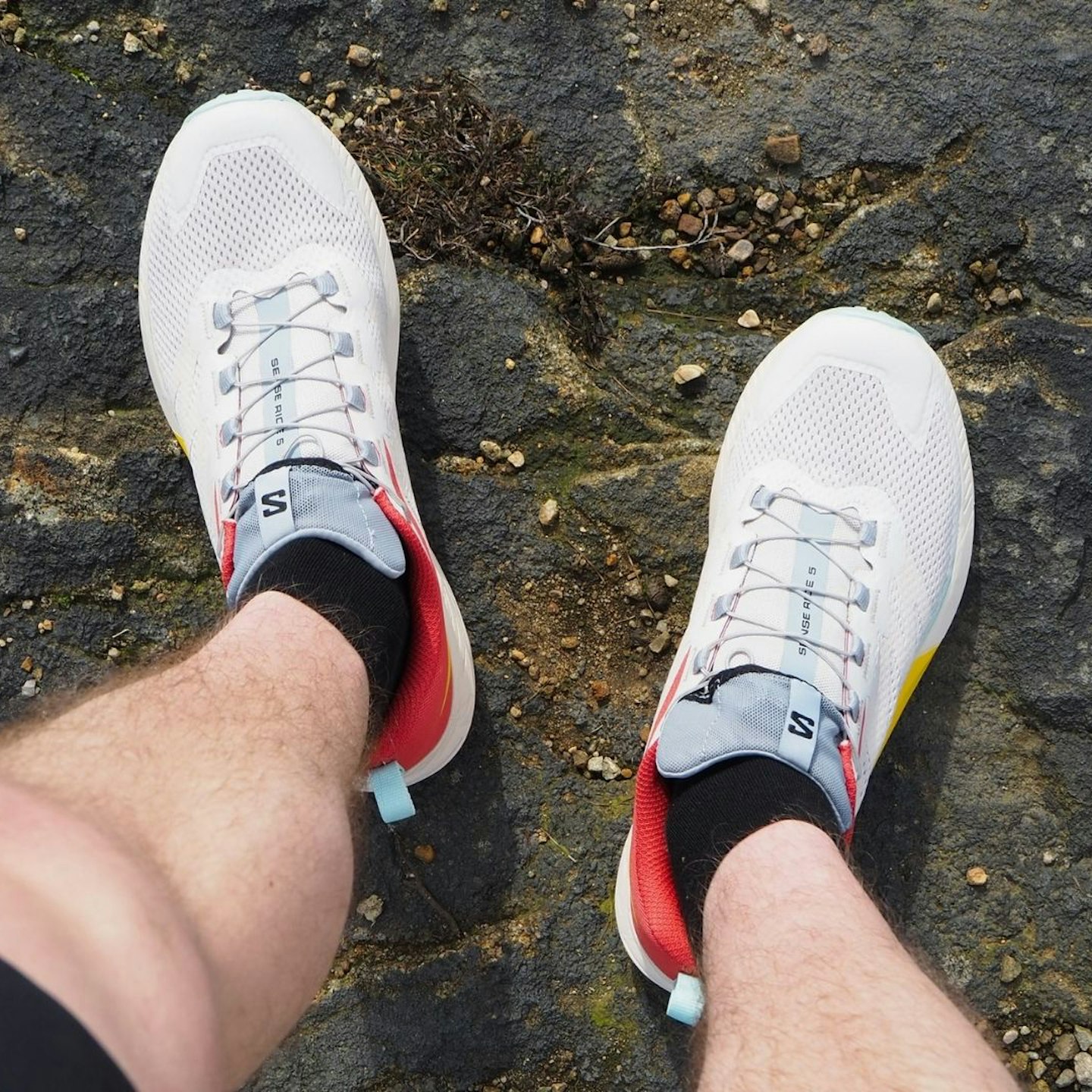Trail running builds strength, agility, and mental fortitude while also providing the optimal venue for an hour or six of exercise – the great outdoors. For us, it always wins against the road.
But, just to back up our biases, we called renowned sport and exercise scientist Professor John Brewer. He told us about the health benefits of trail vs road running, which helped us create these six key reasons to ditch your flashy trainers in favour of some rugged road-to-trail running shoes.
Plus, scroll down to get an exclusive 15% discount at sportsshoes.com by signing up to our Run 1000 Miles challenge
1. Stronger core
Let's kick off by looking at the physiological benefits of trail running. It invariably involves more twists, turns and uneven surfaces than roads. This is a great way of developing not only leg strength, but also core stability (meaning better abs!). Your constantly moving body has to react – often subconsciously – to the changes in its centre of gravity by kickstarting other muscle fibres into action, initiating movements in the trunk and spine that maintain balance and running posture.
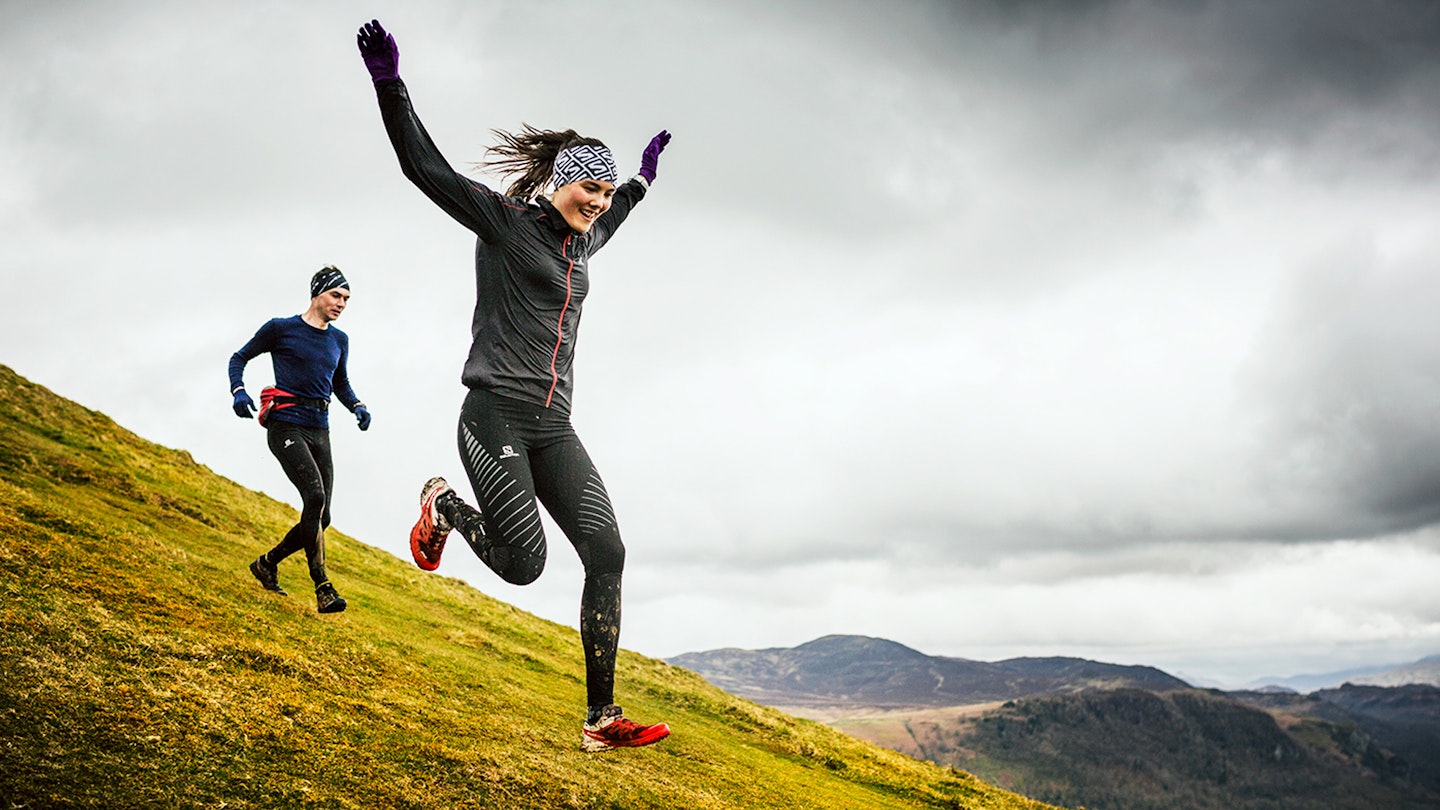
A ‘healthy’ muscle is one that’s used regularly, and when a muscle that’s being used meets a resistance, the result is that protein levels build up within the muscle’s fibres. This increases the diameter of the muscle, improving its strength. So, by developing core stability, trail running produces a fitter body that is better able to withstand the rigours of our daily lives. Plus, bonus points here, a strong core helps to protect against a shed load of common injuries.
2. More powerful legs
The variable terrain and surfaces of trail running are also highly effective at developing local strength in your legs. The overload caused by hills (both up and down) results in gains in leg strength, especially in the quads, calf muscles and hips. Additionally, interval training and fartlek sessions induce periods of high-intensity overload on the body’s physiological systems. When combined with periods of running at a lower intensity, your training will result in impressive physiological adaptations. These include improvement in maximum oxygen uptake (VO2 max) and the ability to tolerate high levels of lactic acid.
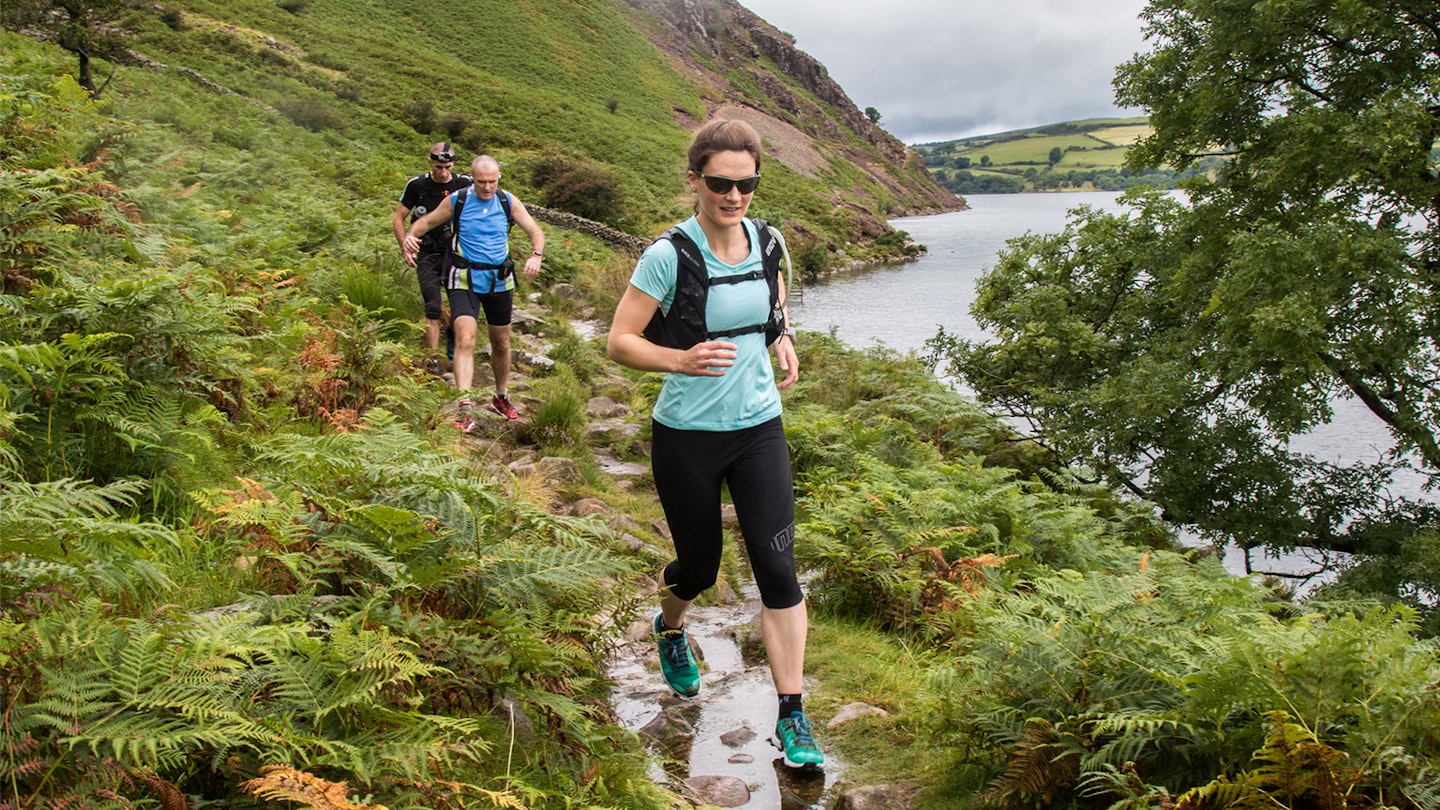
Trail sessions that involve high and low-intensity running are easy to create; changes in gradient, trickier sections and flatter sections of a trail run all lend themselves to periods of high and low-intensity running in a far better way than roads or the stark monotony of a gymnasium treadmill.
3. Cleaner lungs
The rural air that trail runners breathe is likely to be far cleaner and healthier than that inhaled by runners in urban environments, and near roads. Pollution from factories, homes, and cars all contribute to minute particulates in the air. These will enter the lungs causing irritation and potentially impairing the crucial transport of oxygen from the air into the bloodstream to start its journey to the muscles.

It’s worth remembering that runners breathe up to 100 litres of air into, and out of, the lungs each minute – top runners may even exceed this value. That’s a huge volume of air flowing into the respiratory system at a great rate. Consider how long it takes to put 50 litres of fuel into your car. If particulates interfere with this, the process can quickly become impaired, with airways sometimes constricting as a result of irritation from particulates. Getting onto trails means you'll encounter far fewer pollutants, making exercise an easier and healthier experience.
4. Healthier joints
The human body is designed to run. We are, of course, originally distance hunters. But we probably weren’t designed to pound endless miles on hard tarmac, at least not without getting injured. Each time our feet hit the ground, an impact force of at least two or three times a runner’s body weight goes through the feet and legs. Here's the key fact: the harder the surface, the higher this force is.
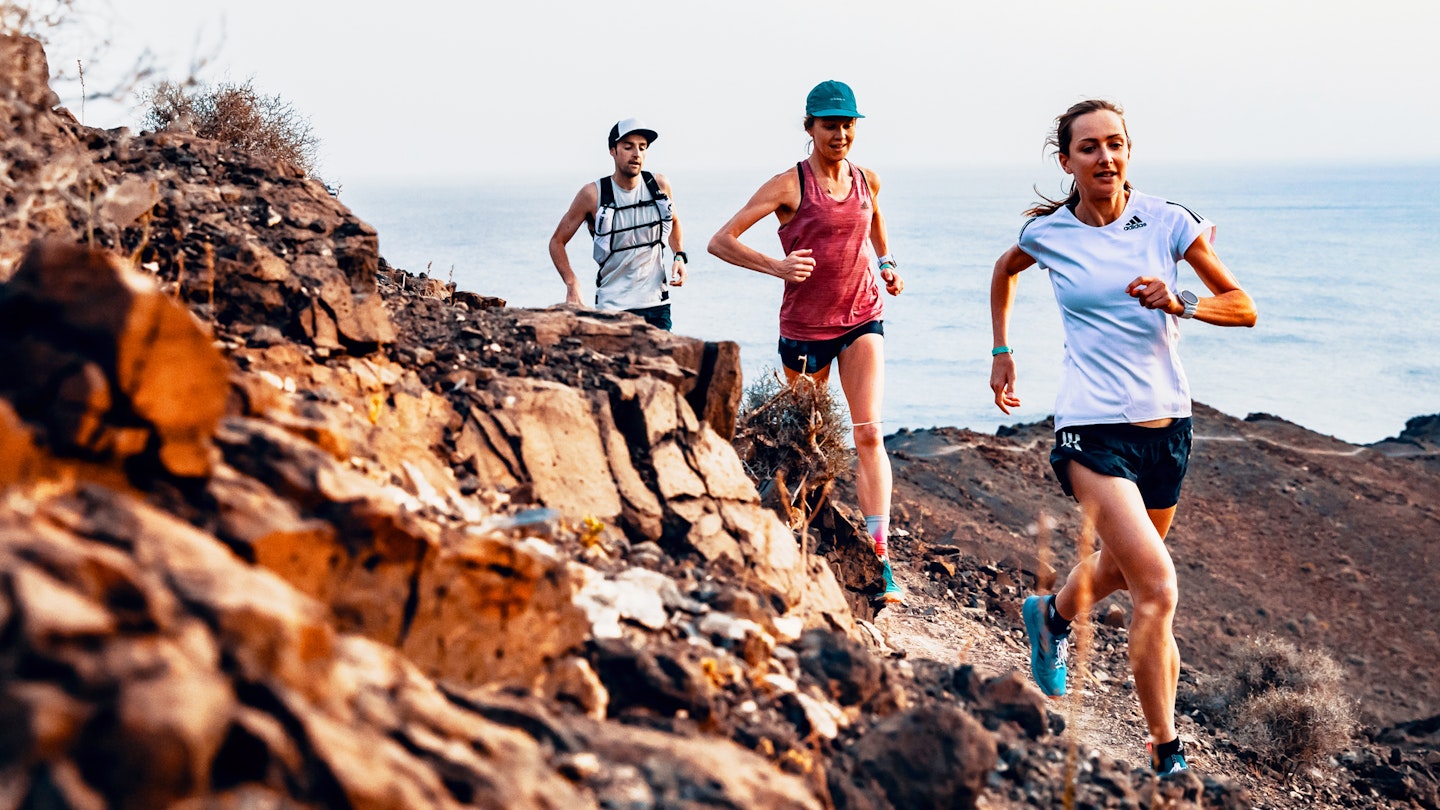
Fortunately, when compared with tarmac, the frequently softer surfaces of trail running can reduce these impacts, lessening the stresses placed on the bones, muscles and joints and reducing the risk of injury. Of course, injuries are an occupational hazard of any type of running, so sadly injury-free running can never be guaranteed. But in the same way that the uneven terrain of trails can condition and strengthen the runner’s body to protect against injury, scientists have also shown that regular moderate impact forces from running can strengthen bone and muscle, and lead to healthier tissues and cartilage.
5. Ever-changing scenery
Getting to a favourite view is a great main source of motivation on days when you're not feeling it. Plus, the changing of the seasons can dramatically impact the scenery and environment encountered on the trails. Changing the conditions from mud to frost, or sun to snow, keeps things fresh and interesting year-round. The altering colours of trail landscapes are hard to replicate on roads, around a track, or in a gym. Trail running embraces the seasons more than any other form of running, uniquely providing runners with a range of experiences throughout the year, on the same run.
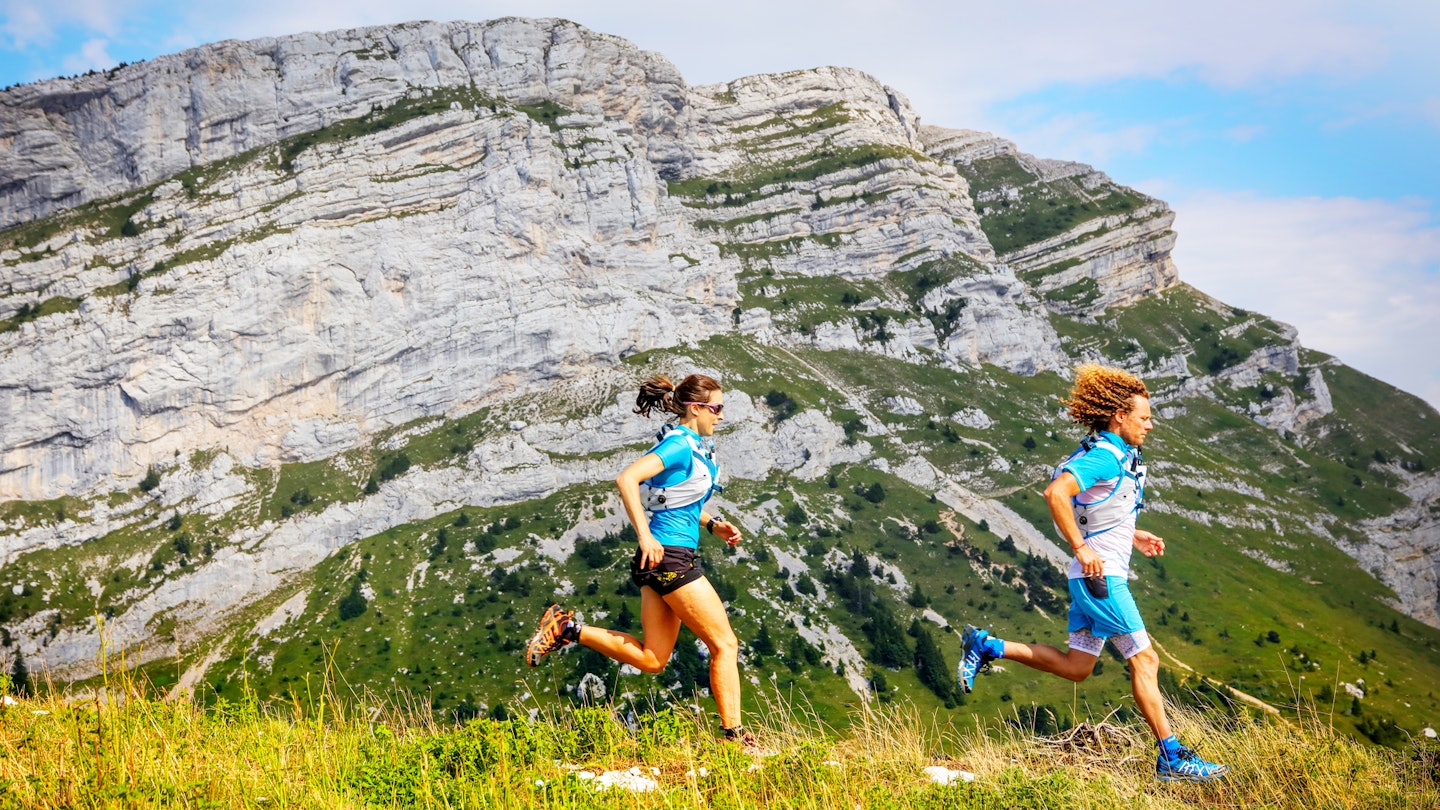
Even in the limited daylight hours of the darkest winter months, running outside on trails (with a running headtorch if it's after 4pm!) is a great way of experiencing all that nature has to offer as the seasons unfold, while gaining the physiological and psychological benefits of exercise.
6. Nature therapy
Running's physical benefits tend to be widely known. A healthier heart, reduced cholesterol, lower blood pressure and improved muscle strength are just a few. However, the psychological benefits are perhaps less well documented, but there is a growing body of evidence to show that regular exercise can result in better self-esteem, a more positive outlook on life, and an enhanced sense of well-being. This seems to be particularly true when exercise takes place in the winter – a time when gloom can all too easily take hold.
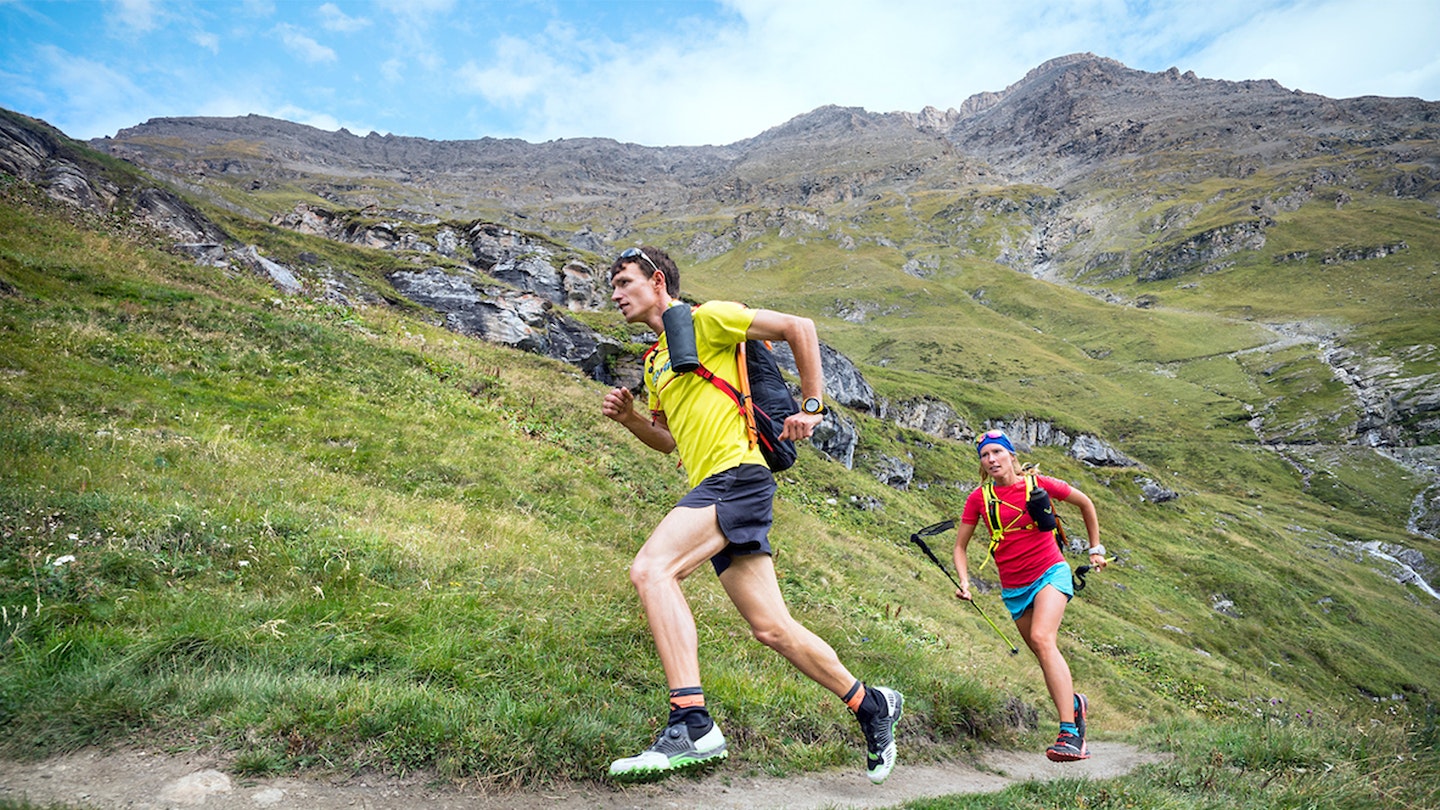
There's no better way to counter this than by heading to the trails, making use of the daylight hours, and allowing your body to benefit from the mental and physical effects of running in the most natural manner possible – on trails that embrace nature and the environment, far away from noise, dust and pollution. It doesn’t matter where the trail is – it could be a park, forest, hill or river – running trails gives us advantages that just can’t be beaten.
How can you run 1000 miles this year?
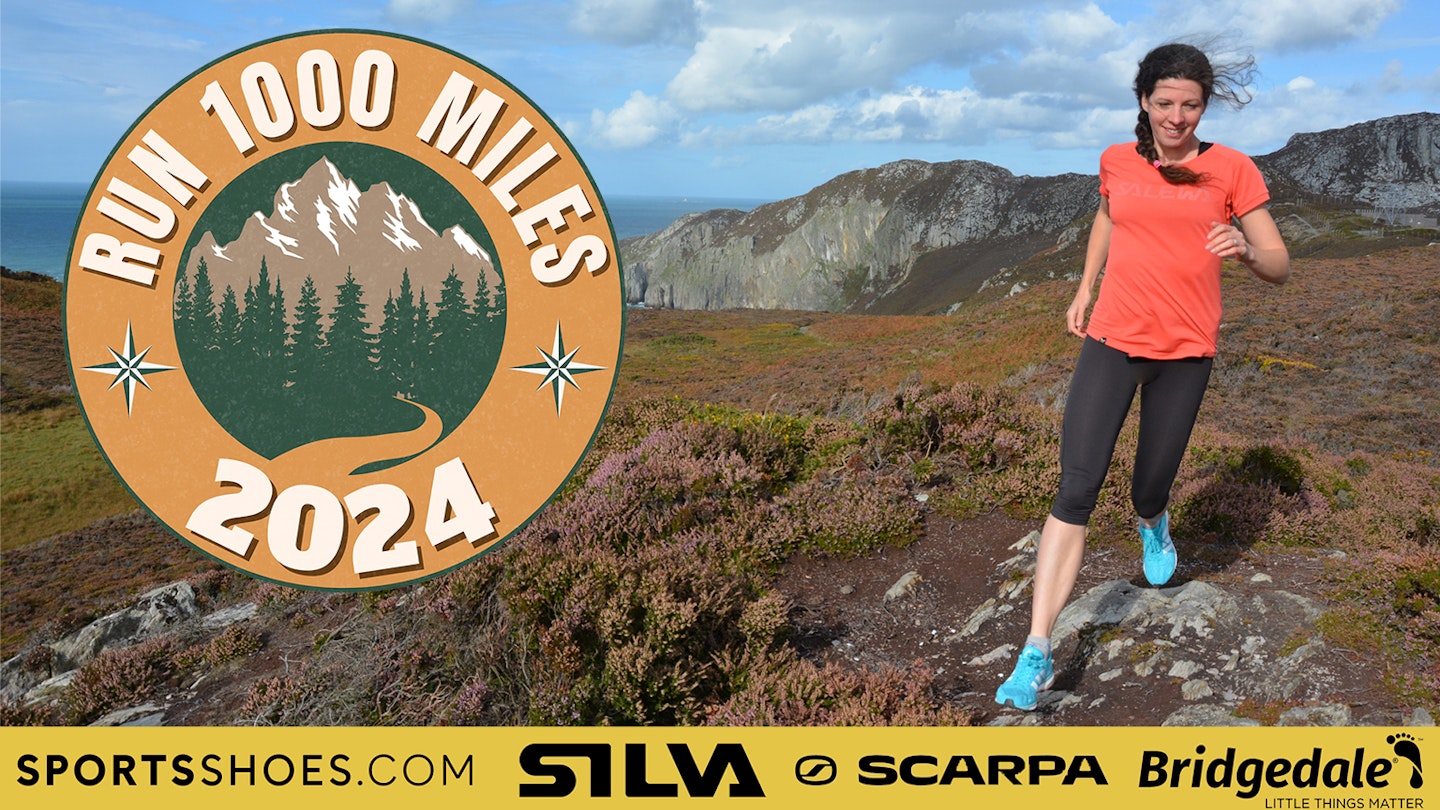
Ultimately, whether it's the fresh air, the softer terrain, or the more interesting scenery, trail running beats tarmac because it allows you to run further for longer.
In 2024, we're once again hosting our annual Run 1000 Miles Challenge. It's one of our favourite ways to get people on the trails, and signing up gives you access to lots of benefits, including 15% off of all running gear at Sportsshoes.com.
So, for any of you who haven't already signed up to run 1000 miles this year, go for it and start your trail running journey. Then, don't forget to use your new discount on a pair of tough trail running shoes to take your running off-road for good.
Our favourite trail running shoes for transitioning off-road
This beast of a shoe boasts a substantial 43mm heel stack and a 38mm forefoot stack, delivering a heavenly level of cushioning comfort. Surprisingly, despite its plush cushioning, it doesn't feel heavy or sluggish in the slightest.
Credit for this goes to the innovative FF BLAST PLUS foam midsole, which reduces landing impact and enhances comfort without sacrificing ground feel. Unlike other bulky, high-stack shoes we've tested, the Trabuco manages to maintain a connection to the ground, offering stability crucial for trail running.
Furthermore, the Trabuco is environmentally conscious, with over 50% recycled materials in its construction, including the ventilated jacquard mesh upper with toe protection and an integrated gaiter system. This combination provides both structure and flexibility while safeguarding against trail debris.
Pros
- Highly cushioned
- Well-structured and supportive
- Traction of range of terrain
- Stylish
Cons
- Not as agile as some
- Stack height may deter minimalist-lovers
| Men's sizes | UK5 - 14 |
| Women's sizes | UK3 - 10 |
| Waterproof version? | No |
| Weight (UK5.5) | 254g |
| Drop | 5mm |
| Stack height | 43mm/38mm |
| Lug depth | 4.5mm |
2.
Hoka Zinal 2
The Hoka Zinal 2 has undergone significant improvements compared to its predecessor. It's notably lighter, featuring a reduced heel drop, taller, more aggressive lugs, and a stretch-knit collar that acts as a gaiter, seamlessly integrated with the tongue.
These changes enhance responsiveness and energy return, making it a great choice for shorter runs. Despite reducing some of Hoka's usual cushioning, the shoe still offers ample shock-absorption through the midsole, making it well suited to the roads and trails alike. It falls on the "Responsive" end of Hoka's cushioning scale.
The fully integrated stretch-knit tongue and collar are a standout design feature, offering easy slip-on access and keeping debris out. Take a look at our full Hoka Zinal 2 review to find out more.
Pros
- Incredibly lightweight
- Aggressive outsole with great traction
- Still has decent cushioning
- Close fit and firm lacing
- Stretch knit collar to keep out debris
Cons
- Plasticky upper can affect breathability
- Sits very low round the ankle
| Men’s sizes | UK 7.5-13.5 |
| Women’s sizes | UK 4-9 |
| Waterproof version? | No |
| Weight (UK 9) | 217g |
| Drop | 5mm |
| Stack height | 30mm |
| Lugs | 5mm |
The Xodus Ultra 2 impressed us with its generous cushioning, courtesy of the PWRRUN PB foam. We found this cushioning to strike an ideal balance for road to trail runs — great impact absorption on hard surfaces without the midsole feeling excessive on muddy trails.
The neoprene-like tongue locks your foot down solidly, and an additional fabric layer shields against debris intrusion, which we always appreciate.
The PWRTRAC undersole showcases impressive grip across various conditions, excelling in both wet and dry environments. Whether on rocky trails or slippery surfaces, these shoes provided the traction needed to navigate with confidence. In all, The Xodus Ultra 2 is a nimble and lightweight running shoe for every occasion.
Pros
- Agile design
- Protective toe box
- Versatile multi-directional lugs
Cons
- Not the best for wide feet
- Some weak spots in the upper
| Men's sizes | 6-13 |
| Women's sizes | 4-9 |
| Waterproof version? | No |
| Weight (UK 9) | 272g |
| Drop | 6mm |
| Stack height | 32.5mm heel/26.5mm forefoot |
| Lugs | 5mm |
The Agility Peak 4 GTX is quite a versatile running shoe for winter. Its Vibram sole doesn't offer quite the same levels of grip as some more specialised winter trail running shoes, but it's still very good over wet surfaces, especially hard roads that can get extra slippy.
We like the firm toe cap and beefy midsole. It's not a shoe with much feel but plenty of foot protection. Somewhat inevitably, the Agility Peak 4 GTX isn't the lightest road to trail running shoe around. So while it's not for PBs, its traits make it a wonderful companion for exploring new trails.
The fit is cosy, borderline intimate. As you might with Salomon's, for example, don't be afraid to go up half a size here. Read our full review of Merrell's Agility Peak 4 GTX for more.
Pros
- Waterproof
- Good foot protection
- Versatile
Cons
- Longer lugs than other choices
| Men's sizes (UK) | 6.5-13 |
| Women's sizes (UK) | 3.5-9 |
| Midsole | Floatpro Foam |
| Drop | 6mm |
| Stack Height | 30-24mm |
| Lug length | 5mm |
| GTX? | Yes |
The Salomon Sense Ride 5 is designed to be a lightweight, versatile trail running shoe for mixed trails. Salomon claims the Sense 5 is equally competent over short and ultra distances.
With a lug pattern clearly angled towards hard-packed trails and at 3.5mm, these shoes really maximise grip over firmer ground thanks to the Contragrip sole. This makes them ideal for occasional stints on the road. They're also agile, managing to remain surprisingly lightweight despite the comfort provided.
For those with slightly narrower than average feet, the Sense 5 feels blissfully comfortable in use. The generous heel arch hugs and supports the foot, while the padded heel nicely locks you in place to avoid slippage during descents. Despite this, there's clearly a balance being struck here between padding and agility, with the forefoot feeling firm and responsive.
Overall, the Sense 5 is a great choice for those door to hilltop runs where you need a good all-rounder trail shoe to get the job done. Sounds good to you? Read our full Salomon Sense Ride 5 review.
Pros
- Good value
- Great for a wide range of terrain
- Balance of cushioning and responsiveness
- Quicklace system
Cons
- Mid to narrower fit won't suit all
- Brand sustainability could be better
| Men's sizes | UK6.5 - 13.5 |
| Women's sizes | UK3.5 - 9.5 |
| Waterproof version? | Yes |
| Weight (UK8.5) | 286g |
| Drop | 8mm |
| Stack height | 29.6mm/21.3mm |
| Lugs | 3.5mm |


